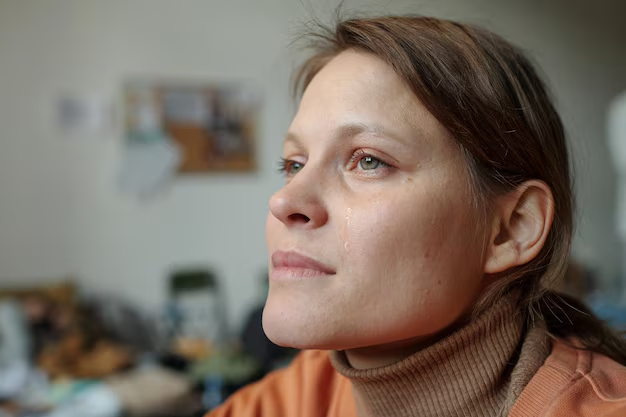Understanding Rosacea: What It Looks Like and How to Recognize It
Rosacea often masquerades as nothing more than a persistent blush or a touch of sunburn. Yet, for many who experience its symptoms, it’s much more than a fleeting flush. This skin condition affects millions worldwide, yet surprisingly, many people remain unsure about what rosacea truly looks like and how it manifests. Let’s delve into the appearance of rosacea, the types, and the ways to recognize its stages.
The Many Faces of Rosacea
Rosacea commonly manifests as facial redness, but that’s just the tip of the iceberg. The condition can present itself in various ways, often leading to misdiagnosis or confusion. Whether you're personally dealing with it or know someone who is, knowing the subtleties can make all the difference.
Common Symptoms and Signs
- Persistent Redness: Often mistaken for flushing or blushing, this redness typically occurs on the nose, cheeks, forehead, and chin.
- Bumps and Pimples: Unlike acne, these are extensive and can be tender.
- Visible Blood Vessels: Sometimes the skin becomes so sensitive that tiny blood vessels become visible.
- Eye Irritation: The condition doesn’t just affect the skin; eyes can become watery or bloodshot.
- Thickened Skin: Over time, the skin, particularly around the nose, can thicken — a condition known as rhinophyma.
Four Main Types of Rosacea
Understanding the four primary subtypes of rosacea can help you identify specific symptoms and make informed decisions on managing them.
1. Erythematotelangiectatic Rosacea (ETR)
ETR is marked by persistent redness, facial flushing, and occasionally, visible blood vessels under the skin. This type often results in sensitive skin prone to irritation from skincare products or environmental conditions.
2. Papulopustular Rosacea
This subtype is often confused with acne due to its characteristic bumps and pustules. The skin may appear reddish around these spots, and it can sometimes be accompanied by oily skin.
3. Phymatous Rosacea
Notably involving thickening of the skin, phymatous rosacea leads to an irregular, bumpy texture. The most common area affected is the nose, leading to a condition called rhinophyma. This rarity can dramatically alter one’s appearance.
4. Ocular Rosacea
Eyes come into focus in this form, which may result in a burning or gritty sensation. Eyelids can appear red and swollen, and in severe cases, it may affect vision.
Identifying Rosacea in Various Skin Tones
While rosacea is often portrayed as a condition affecting lighter skin tones, it’s essential to recognize it in darker skin as well. In darker skin, redness might not be as apparent, but other symptoms like bumps, skin texture changes, and eye issues can be strong indicators.
Common Triggers of Rosacea
While the exact cause remains unknown, several triggers can exacerbate rosacea symptoms. Understanding these can help in managing flare-ups.
- Sun Exposure: UV rays are a common trigger; wearing sunscreen daily is crucial.
- Stress: Emotional stress can lead to heightened symptoms.
- Dietary Factors: Spicy foods, caffeine, and alcohol may worsen the condition.
- Temperature Extremes: Both cold wind and hot environments can be challenging.
- Skincare Products: Ingredients like alcohol, menthol, and witch hazel might irritate the skin.
Tips for Recognizing Rosacea Early
Early recognition is key to managing rosacea effectively. While there is no one-size-fits-all approach, the points below can help:
- Observe Patterns: Pay attention if facial redness follows certain activities or exposures.
- Track Symptoms: Maintaining a diary that notes dietary intake and skincare products can help identify triggers.
- Consult a Professional: If in doubt, seeing a dermatologist can help confirm a diagnosis.
Living with Rosacea: Managing Symptoms
For many, managing rosacea is an ongoing journey. While there's no cure, how you manage the condition can dramatically improve quality of life.
- Gentle Skincare: Using fragrance-free and non-abrasive products can prevent irritation.
- Sun Protection: Consistent use of a broad-spectrum SPF can protect against UV-related triggers.
- Reduce Stress: Incorporating stress-reduction techniques like meditation can be beneficial.
- Dietary Adjustments: Identifying and avoiding dietary triggers can help prevent flare-ups.
Emotional and Psychological Impact of Rosacea
Due to its visible nature, rosacea can lead to emotional distress. Understanding its psychological impact is equally important.
- Self-Esteem Issues: The visible marks and redness can affect self-confidence.
- Social Anxiety: Fear of social situations where symptoms might flare up is common.
- Support Seeking: Joining support groups or engaging with others who have rosacea can provide comfort and shared strategies.
Rosacea is not just a condition of the skin but involves a comprehensive aspect of emotional and social well-being. Navigating through it requires not just medical understanding but emotional resilience as well.
Final Insight
Rosacea might seem daunting given its varied manifestations, but understanding what it truly looks like and the different types can empower those affected by it. Awareness of triggers and symptoms plays a pivotal role in managing the condition effectively and keeping it in check. Remember, while it may feel isolating, rosacea is a shared experience for many, and support is always available. Empower yourself with knowledge and patience as you navigate your journey with rosacea.
Quick Summary of Rosacea Recognition and Management
- 🌞 Sun Protection: Regular use of broad-spectrum SPF is essential.
- 📅 Track and Identify Triggers: Maintain a symptom diary to pinpoint flare-up causes.
- 🧘 Stress Management: Incorporate stress-relief practices into your routine.
- 💧 Gentle Skincare: Use fragrance-free, non-abrasive products.
- 👀 Eye Care: Be aware of ocular symptoms and seek professional advice when needed.
